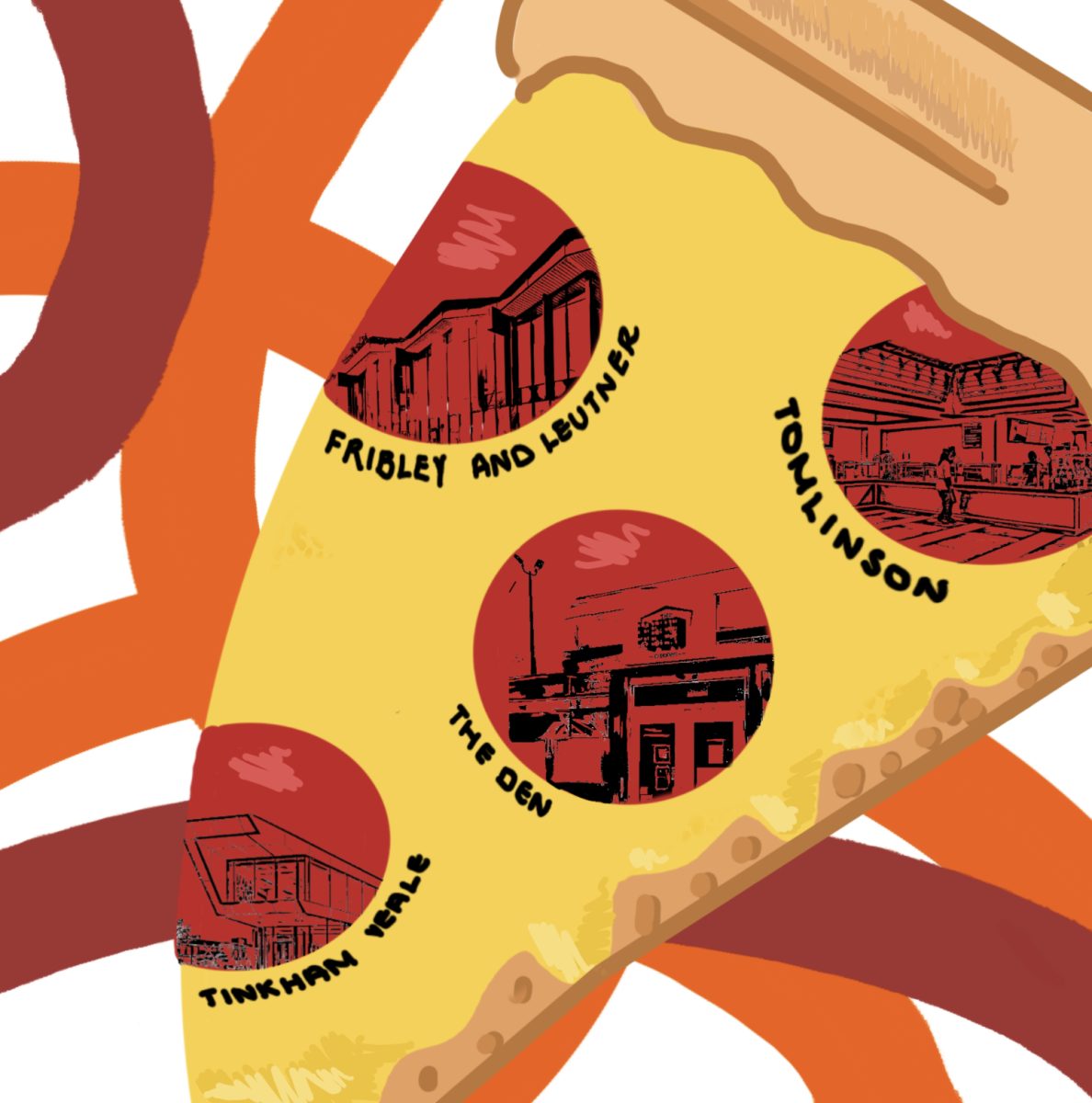A couple of weekends ago I found myself craving green beans. This was not only a horrifying realization, but an epiphany that caused me to reflect on my concerns about my recent diet. As a student, my free time is pretty scarce. I’m constantly doing homework, studying for tests, participating in clubs or working to pay off my lovely student loans. You’d think, then, that the meal plan would be the perfect option for me, someone always on the go. It’s quick, easy and convenient, right?
Well, maybe not.
For on-campus first- and second-year students, being on the meal plan is mandatory. In most cases this is fine since many students who live on campus don’t have access to cars. For those with the ability to leave campus, though, it may feel like a waste of money—especially if they usually find themselves making off-campus purchases instead of eating at school. The price of the meal plan is steep for the quality of available options and varies significantly between first-year and fourth-year students. The lowest price offered for first years is a whopping $3,790 per semester, with the yearly total being $7,580. This is quite a high price, especially considering this is the lowest tier option.
I hear many complaints around the school about limited vegan and vegetarian options as well as incorrect or missing labels on food. The larger problem, though, seems to be that options in general are limited. Every day I find myself choosing between the same couple of foods that I don’t think will leave me feeling ill; this choice is typically between pasta, a salad or some kind of sandwich. While there is a wider variety of food options on the Case Quad—Local Taco, Fujisan Sushi and Subway—I can rarely take advantage of them because they close too early for dinner, thus limiting my food options.
Almost every college student I know wakes up late and sleeps through the early hours of the morning on the weekends. Because of this, I know many people ration their Jolly Scholar swipes specifically for Saturday and Sunday when a much smaller selection of on-campus dining is available—whether that be because they close early or because they don’t open at all. I can’t count how many times I’ve attempted to put an order in at Plum Market or Elephant Step Inn only to find that absolutely nothing on the menu is available through Transact Mobile Ordering. Randomly throughout the day, they may pop up on the menu as available, but many times they do not. This, of course, means I end up paying for food out-of-pocket—the money that’s supposed to be paying for my education.
Although first- and second-year students are required to be on the meal plan, getting food for many of them does not seem to be an easy feat. For second years in particular, Southside seems to exist in a different universe than the rest of campus. Many students complain about eating bagels and fruit cups for dinner over the weekend because nothing nearby besides Elephant Step Inn is open late at night. It also doesn’t help that the dining halls also close earlier on the weekend than during weekdays. While second years who live in Triangle Towers are closer to restaurants on Euclid Avenue, the majority of these places cost money, whether that be through CaseCash or real cash. And I can only imagine what getting food must be like during snowy days. Additionally, high wait times and demands may cut orders off—sometimes more than an hour before a place is set to close. Many times food is such a hassle to get, and as a result, quite a few people just choose not to eat even when they’re hungry.
Dining halls have replaced to-go containers with half-paper cartons, which are not only unwieldy to carry if you don’t live nearby, but also a struggle to protect from outside elements. Forget bringing your food back to your dorm to eat if it’s raining: You have to sit and eat in the dining hall with everyone else in your year just like you did in high school.
The school’s decision to switch from Grubhub to Transact Mobile Ordering seemed like a doomed decision from the start. While Grubhub wasn’t perfect, I think it was a much better application than Transact Mobile Ordering seems to be. The new application doesn’t allow for multiple items to be added to a meal plan transaction at the same time, which at most is a slight annoyance that can easily be bypassed with multiple sequential transactions. What really irks me about Transact Mobile Ordering, though, is the wait time and lack of additional note features.
While Grubhub allowed for students to place an order and then track all the unfinished orders ahead of them, Transact Mobile Ordering only gives an estimated wait time before spitting out a target time once an order is placed. The catch is this: The target time is very rarely the actual time your food will be ready. There is no way to check how many orders are ahead of or behind yours, and once the target time has passed, you may see the dreaded words: “Waiting for Release.” “Waiting for Release” means no one has any idea how long your order will take to be prepared, but there are a lot of orders ahead of yours—a lot. One of my most humbling moments consisted of a three-hour wait for The Den by Denny’s mozzarella sticks because of the sheer mass of people ordering at the same time. By the time I received my food, it was nearly 1 a.m. when my original order had been placed at around 9:30 p.m.
Furthermore, the lack of the additional notes feature means that students cannot specify items they do not want or cannot have for a particular food option. For example, students can’t request that cheese or aioli be removed from their meal selection since no such feature exists. This further decreases the amount of options available for students, which only adds to the difficulties they face in functioning in such a stressful and fast-paced environment.
In any case, I believe it is important to note the tireless and long hours that the Bon Appétit dining staff puts in day after day in order to provide food for our campus. They work very demanding jobs feeding so many people, and they deserve to be respected by both their employers and students on campus. I don’t see why such difficult jobs shouldn’t have higher starting wages than $15 when, day after day, I see the same faces providing my breakfast, lunch and dinner—whether that be at 7 a.m. or 3 a.m. From an outrageously overpriced meal plan, to limited dining options, a poor ordering system and underpaid workers, Case Western Reserve University dining needs to be improved for everyone involved.




